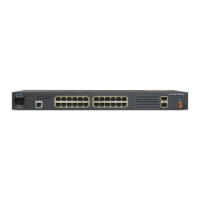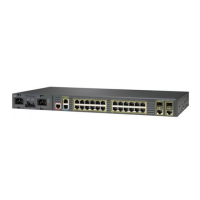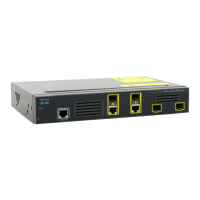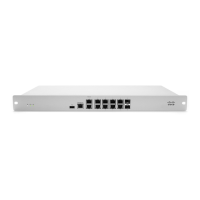-53
Cisco ME 3800X and ME 3600X Switch Command Reference
OL-28238-01
Chapter
speed
speed
To specify the speed of a 10/100/1000 Mbps port, use the speed interface configuration command. To
return the port to its default value, use the no or default form of this command.
speed {10 | 100 | 1000 | auto [10 | 100 | 1000] | nonegotiate}
no speed
Note You cannot configure the speed on small form-factor pluggable (SFP) module ports or on 10 Gigabit
Ethernet ports, but you can configure the speed to not negotiate (nonegotiate) if they are connected to a
device that does not support autonegotiation. See “Usage Guidelines” for exceptions when a
1000BASE-T SFP module is in the SFP module slot.
Syntax Description
Defaults The default is auto.
Command Modes Interface configuration
Command History
Usage Guidelines You can configure the Gigabit Ethernet port speed as 10, 100, or 1000 Mbps.
You cannot configure the speed on 10 Gigabit Ethernet ports, but you can configure the speed to not
negotiate (nonegotiate) if they are connected to a device that does not support autonegotiation.
When a 1000BASE-T SFP module is in the SFP module slot, you can configure the speed as 10, 100,
1000, or auto but not to nonegotiate.
Except for the 1000BASE-T SFP modules, if an SFP module port is connected to a device that does not
support autonegotiation, you can configure the speed to not negotiate (nonegotiate).
10 Port runs at 10 Mbps.
100 Port runs at 100 Mbps.
1000 Port runs at 1000 Mbps. This option is valid and visible only on 10/100/1000
Mbps-ports.
auto Port automatically detects the speed it should run at based on the port at the other
end of the link. If you use the 10, 100, or 1000 keywords with the auto keyword, the
port only autonegotiates at the specified speeds.
nonegotiate Autonegotiation is disabled, and the port runs at 1000 Mbps. (The 1000BASE-T SFP
does not support the nonegotiate keyword.)
Release Modification
12.2(52)EY This command was introduced.

